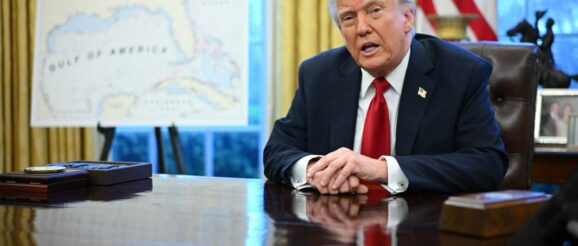Trump imposes new tariffs on imported cars

President Trump signed an executive order imposing 25% tariffs on imported cars on Wednesday.
“I think our automobile business will flourish like it’s never flourished before,” Trump said in remarks from the Oval Office.
The latest policy is yet another example of the president’s tariff-centric second-term economic agenda. Thus far, Trump has imposed tariffs on Chinese goods, steel and aluminum, and on some goods from Canada and Mexico. Trump also plans a wave of what he calls “reciprocal tariffs” to start April 2, which he has called “Liberation Day.” The taxes on imports have caused plummeting stock markets and consumer confidence, and have left businesses and consumers uncertain about what they want to invest in.
The Trump administration has given multiple rationales for these tariffs, but they have emphasized boosting manufacturing as the chief goal.

Trump’s tariff policy has been chaotic throughout this presidency. In addition to the tariffs already imposed, he has threatened still more tariffs on a range of goods from around the world, at times announcing a tariff only to delay or retract that tariff.
Earlier this week, Trump floated what he called a “secondary tariff” of 25 percent on goods from any country buying oil or gas from Venezuela.

Wednesday’s auto tariffs were themselves moved up from April 2, when Trump had previously said those tariffs would begin.
On April 2, which Trump called “Liberation Day” in his remarks Wednesday, the president has said he will impose “reciprocal tariffs,” which he has described as being equal to tariffs other countries impose on U.S. goods. However, the White House has given few specific details on what those reciprocal tariffs will look like.
